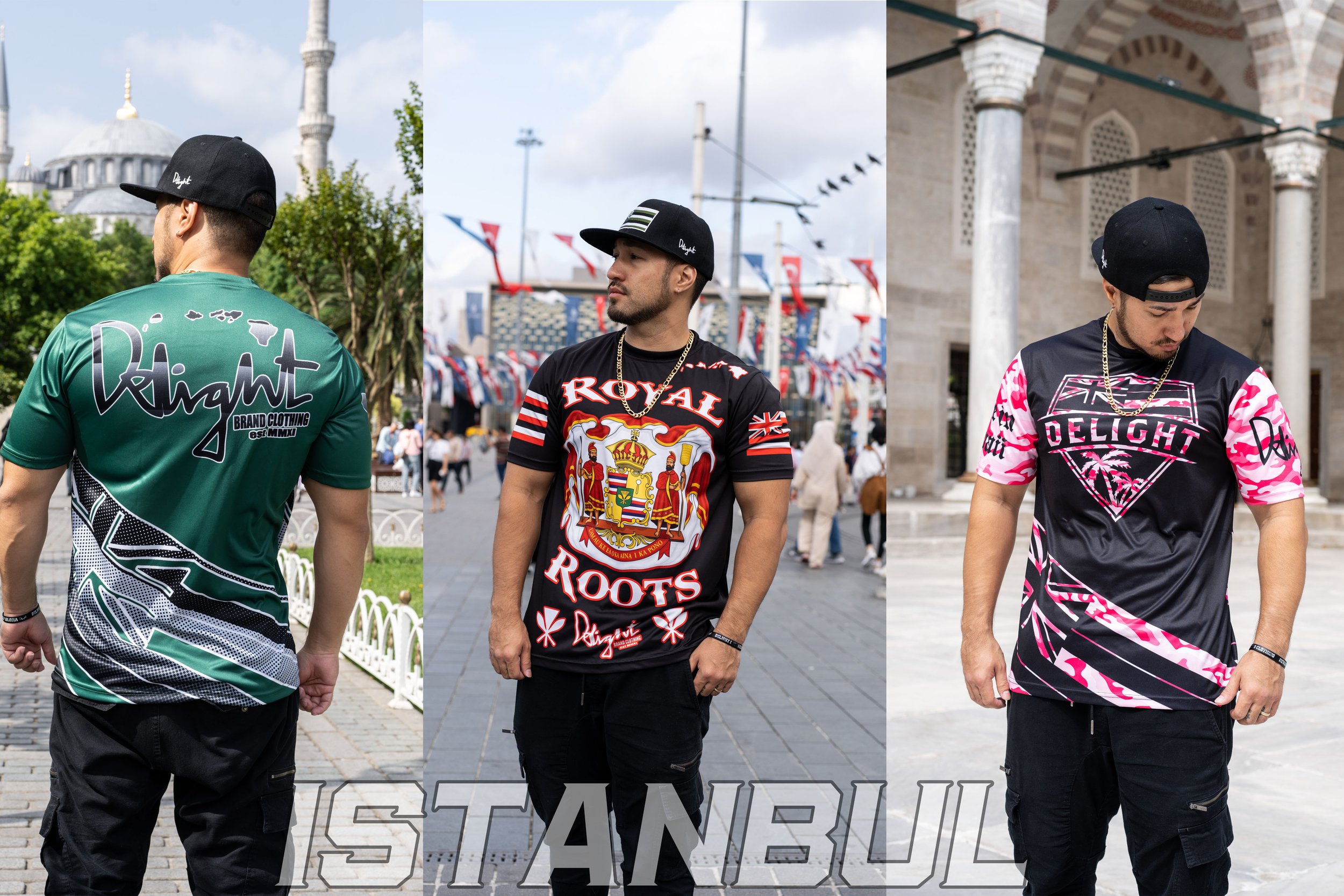Branded Clothing for Cold Climates: Which Fabrics Actually Work?
Branded Clothing for Cold Climates: Which Fabrics Actually Work?
Blog Article
Recognizing Clothing: The Relevance of Material Options in Your Closet
The choice of material in clothes plays an essential duty in both aesthetics and performance. Different products supply varying levels of convenience, sturdiness, and breathability, directly influencing the wearer's experience. Understanding these subtleties can boost one's closet noticeably. Yet, several ignore how these choices can influence not just personal style, however additionally sustainability. What textile choices could redefine your wardrobe and align it with both style and duty?
The Function of Material in vogue and Capability

Common Material Kinds and Their Qualities
When picking clothes, comprehending the features of common fabric types is important for making educated options. Cotton, a widely-used natural fiber, is recognized for its breathability, soft qualities, and versatility, making it ideal for sportswear and day-to-day garments. Linen, one more natural alternative, boasts excellent moisture-wicking homes and a distinct texture, suitable for cozy climates.Wool, usually favored for its heat and durability, differs in fineness; merino woollen is soft versus the skin, while coarser kinds are used for outerwear. Artificial materials like polyester and nylon use durability and resistance to wrinkles, making them prominent for activewear and travel garments. Blends, which integrate artificial and natural fibers, can improve performance while keeping convenience. By identifying these material characteristics, individuals can select clothing that straightens with their lifestyle and visual choices.
Breathability and Comfort: Selecting the Right Fabrics for Different Environments
Selecting the right materials for various environments can greatly boost comfort and total wearability. Breathable materials are vital in hot climates, as they permit air circulation and dampness dissipation. Fabrics such as cotton, linen, and moisture-wicking synthetics successfully attract sweat away from the body, maintaining the user cool and dry. On the other hand, in colder environments, thicker fabrics like woollen or fleece supply insulation while preserving breathability, guaranteeing heat without overheating.Additionally, the choice of material weight plays a vital function; lightweight textiles are preferable for summertime, whereas heavier choices are fit for winter wear. Recognizing the distinct buildings of each material makes it possible for individuals to dress suitably for differing weather. Eventually, choosing comfy and breathable fabrics tailored to certain climates can greatly enhance daily convenience and improve the general experience of putting on apparel.
Resilience and Treatment: Just How Textile Influences Long Life of Your Closet
Choosing the best products can significantly affect the longevity and care demands of a wardrobe. Fabrics such as cotton and polyester are recognized for their strength and ease of maintenance, making them ideal for daily wear. On the other hand, fragile products like silk and shoelace need even more cautious handling and specialized cleaning approaches, which can raise the moment and effort needed for care. Branded Clothing.Durability is additionally influenced by the material's weave and coating; firmly woven textiles have a tendency to stand up to damage better than freely woven options. Additionally, synthetic blends frequently give boosted durability, incorporating the most effective high qualities of multiple fibers.Understanding the care guidelines for each textile is vital, as inappropriate cleaning or drying out can cause early wear. Eventually, choosing sturdy materials can lead to a longer-lasting closet, lowering the regularity of replacements and contributing to an extra sustainable fashion selection
The Effect of Fabric on Fit and Shape

Sustainable Material Selections: Making Eco-Friendly Choices
The impact of fabric expands beyond fit and silhouette to encompass environmental factors, prompting a growing interest in lasting fabric selections. Environmentally friendly materials, such as organic cotton, hemp, and Tencel, are acquiring grip among customers who prioritize sustainability in their closets. These materials are usually generated with fewer chemicals and water, lowering their eco-friendly footprint.Additionally, recycled materials, made from post-consumer waste, offer an ingenious remedy to the textile industry's air pollution issue. Brands significantly accept openness in their sourcing approaches, allowing consumers to make enlightened decisions concerning their purchases.Choosing sustainable fabrics not only sustains honest practices yet also urges the garment industry to embrace even more accountable manufacturing methods. As recognition of environmental issues climbs, people are advised to assess the long-term impact of their fabric options, fostering a motion in the direction of a much more environmentally mindful and sustainable method to fashion.
Raising Style: How Textile Can Change an Outfit
While many might concentrate on color and cut when selecting an attire, the selection of textile plays an important function in boosting style and improving total look. Various products convey unique state of minds and messages; as an example, silk exhibits deluxe and sophistication, while jeans provides a laid-back, relaxed vibe. The structure and drape of a fabric can substantially change the shape, with structured fabrics offering a polished appearance and softer look at more info ones developing an extra fluid, unwinded aesthetic.Moreover, the weight of the material affects wearability throughout seasons. Lightweight textiles like linen and cotton are perfect for summer season, while larger materials such as wool and velour give heat and beauty in chillier months. Recognizing textile properties, such as breathability and stretch, also encourages people to make enlightened options that enhance convenience without endangering style. Eventually, the best fabric can change an outfit from normal to amazing, making it an essential consideration in any closet.
Regularly Asked Concerns
Exactly how Do I Determine the Textile Content of My Clothing?
To recognize material content, one can analyze care tags, conduct shed examinations for fiber identification, or seek advice from fabric examples. These approaches assist set apart materials, making sure educated options for clothes treatment and upkeep in day-to-day wear.
Can Fabric Selection Affect My Mood or Self-confidence?
Textile selection can greatly impact an individual's state of mind and confidence. Branded Clothing. Particular products may evoke sensations of convenience or sophistication, while others can really feel limiting or unflattering, eventually influencing self-perception and emotional health throughout the day
What Fabrics Are Finest for Sensitive Skin?
For individuals with sensitive skin, all-natural textiles like bed linen, cotton, and bamboo are typically suggested. These materials are breathable, hypoallergenic, and less likely to create irritation, making them appropriate selections for comfort and skin wellness.
How Do I Correctly Laundry and Take Care Of Different Fabrics?
To effectively wash and care for different fabrics, one must consider each material's certain demands, including temperature level settings, cleaning agents, and drying out approaches, guaranteeing longevity and maintaining the fabric's original high qualities for suitable usage.
Exist Specific Fabrics for Athletic or Performance Put On?
Sports or performance wear commonly uses textiles such as nylon, spandex, and polyester. These products are made for moisture-wicking, breathability, and versatility, boosting activity and comfort throughout exercises while giving resilience and support. Alternatively, in cooler environments, thicker materials like woollen or fleece offer insulation while preserving breathability, making certain heat without overheating.Additionally, the choice of textile weight plays an essential function; light-weight textiles are more effective for summertime, whereas much heavier options are fit for winter wear. In comparison, delicate products like silk and shoelace require more mindful handling and specialized cleansing methods, which can raise the time and effort needed for care.Durability is also affected by the fabric's weave and finish; snugly woven fabrics tend to resist wear and tear far better than freely woven options. In contrast, rigid textiles can restrict activity however offer a classic, sleek look.Moreover, the density and structure of the material can influence the aesthetic perception of body shape. The impact of material expands beyond fit and shape to incorporate ecological aspects, triggering a my site growing interest in sustainable fabric options. The structure and drape of a material can drastically alter the silhouette, with organized materials supplying a sleek look and softer ones producing a more fluid, relaxed aesthetic.Moreover, the weight of the fabric affects wearability across seasons.
Report this page